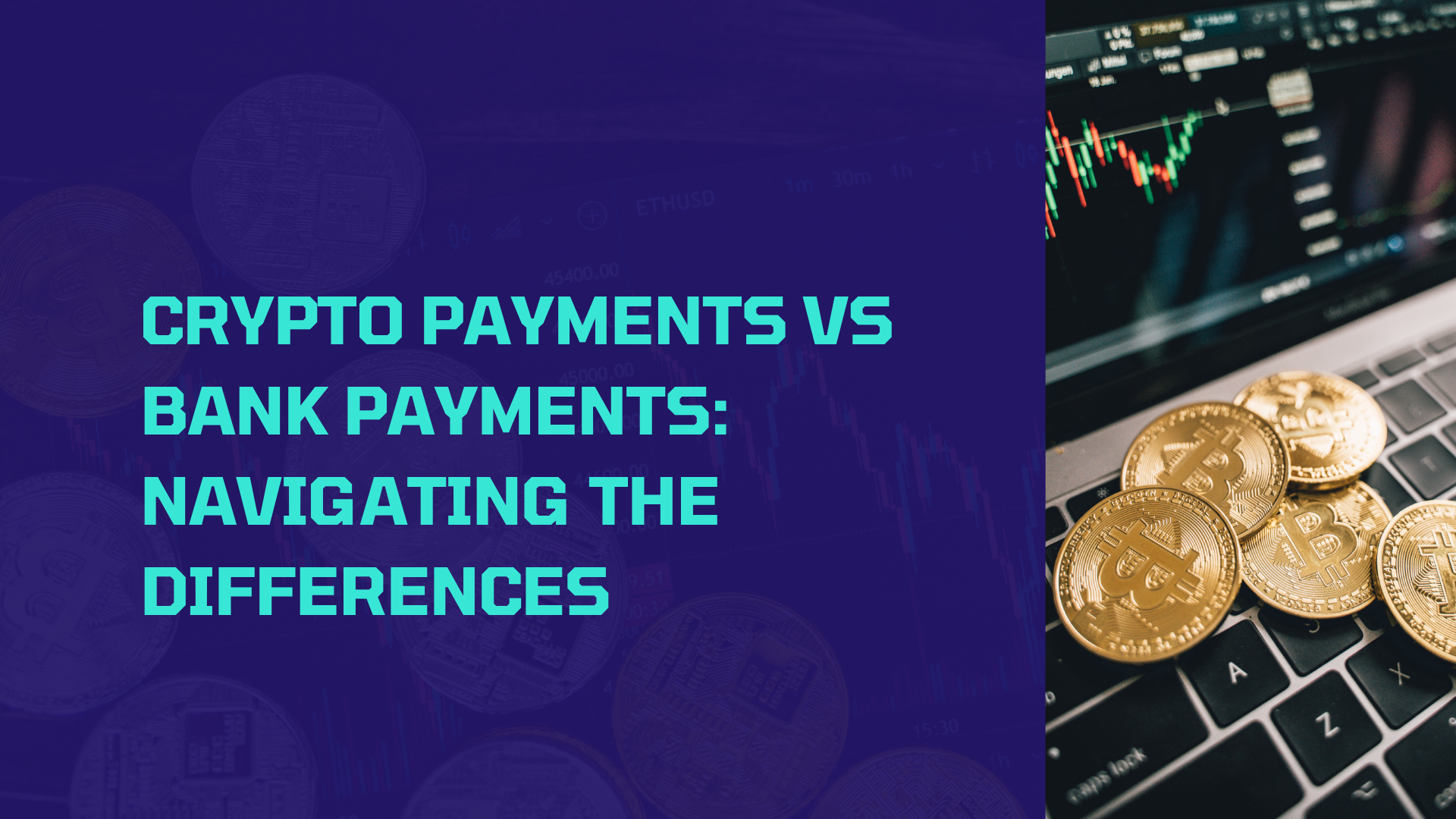
Cryptocurrency and traditional banking systems represent two fundamentally different approaches to managing value and conducting financial transactions. While banks have been the cornerstone of global finance for centuries, cryptocurrencies like Bitcoin and Ethereum offer a decentralized alternative that leverages blockchain technology. This article explores the key differences between crypto payments and bank payments , comparing their speed, fees, security, accessibility, and use cases.
Introduction: The Shift to Digital Finance
The rise of cryptocurrencies has disrupted traditional financial systems, challenging the dominance of banks and payment processors. According to a 2023 study, crypto payments now account for over $1 trillion in annual transactions, driven by their speed, lower fees, and borderless nature. Meanwhile, bank payments remain the default for most users due to familiarity and regulatory stability. Understanding their differences is critical for individuals and businesses seeking to optimize their financial strategies.
Core Differences Between Crypto and Bank Payments
1. Decentralization vs Centralization
The foundational divide between crypto and bank payments lies in their structures:
- Crypto Payments: Operate on blockchain technology, a decentralized network of computers that validate transactions without intermediaries. This eliminates reliance on banks or governments.
- Bank Payments: Are controlled by centralized institutions, such as commercial banks and central banks, which regulate transactions and maintain oversight.
For example, Bitcoin’s blockchain allows users to send funds directly to anyone globally, bypassing banks. In contrast, traditional bank transfers require approval from financial institutions, which can delay or block transactions.
2. Speed and Efficiency
- Crypto Payments: Transactions are often completed in minutes. For instance, Bitcoin confirms transactions within 10 minutes, while Ethereum can process them in seconds. This speed is critical for cross-border payments, which traditionally take days through banks.
- Bank Payments: International transfers via SWIFT or wire transfers can take 1–5 business days, with delays due to intermediaries and manual processing.
3. Transaction Fees
- Crypto Payments: Fees (gas fees) vary but are generally lower for small to medium transactions. For example, a $100 crypto transfer might cost $1–$5, whereas bank transfers can charge $30 or more.
- Bank Payments: Fees are often fixed and opaque, with hidden charges for international transfers, currency conversion, and overdrafts.
4. Security and Privacy
- Crypto Payments: Use cryptographic techniques to secure transactions, making them resistant to fraud. However, user wallets are only as secure as their private keys. Blockchain transparency allows anyone to view transaction histories, though anonymity tools like privacy coins (e.g., Monero) mitigate this.
- Bank Payments: Rely on centralized security systems, which are vulnerable to hacks and data breaches. Banks also require users to share personal information, reducing privacy.
5. Accessibility and Inclusion
- Crypto Payments: Enable unbanked populations to participate in the global economy. Over 1.7 billion adults lack bank accounts, but many can access crypto via smartphones.
- Bank Payments: Require formal identification and bank accounts, excluding those in regions with limited financial infrastructure.
Use Cases and Adoption
Where Crypto Payments Excel
- Cross-Border Remittances: Crypto reduces costs and delays for sending money internationally. For example, remittances to developing countries via crypto can save up to 70% in fees compared to banks.
- Peer-to-Peer (P2P) Transactions: Platforms like Coinbase and Binance allow instant, low-cost transfers between individuals.
- Micropayments: Blockchain supports tiny transactions (e.g., $0.01) that are uneconomical for banks due to high fees.
Where Bank Payments Dominate
- Regulated Environments: Banks are legally compliant and trusted for high-stakes transactions, such as mortgages or business loans.
- Stability: Fiat currencies (e.g., USD) are backed by governments, offering stability compared to crypto’s volatility.
Risks and Challenges
Crypto Payments
- Volatility: Crypto prices can fluctuate wildly, impacting the value of stored funds. For example, Bitcoin’s price dropped 60% in 2022.
- Regulatory Uncertainty: Governments may restrict crypto use, as seen in bans in China and India.
- Technical Complexity: Users must manage private keys and wallets, which can lead to accidental loss of funds.
Bank Payments
- Intermediary Risks: Banks can freeze accounts or block transactions, especially for politically sensitive activities.
- Slow Innovation: Legacy systems struggle to adapt to digital demands, leading to inefficiencies in mobile banking and cross-border payments.
Choosing Between Crypto and Bank Payments
When to Use Crypto
- Global Transactions: For fast, low-cost cross-border payments.
- Privacy-Prioritized Scenarios: When anonymity is critical (e.g., donations to restricted regions).
- Investment Opportunities: To hold assets in decentralized finance (DeFi) platforms.
When to Use Banks
- Large-Scale Transactions: For loans, mortgages, or institutional deals requiring regulatory oversight.
- Fiat Stability: When preserving purchasing power in a stable currency.
- Security Concerns: For users uncomfortable managing crypto wallets.
Future Trends: Convergence or Competition?
Central banks worldwide are exploring Central Bank Digital Currencies (CBDCs) to blend blockchain efficiency with traditional financial regulation. For instance, China’s digital yuan aims to streamline payments while maintaining state control. Meanwhile, crypto platforms like Ethereum are improving scalability and privacy features to rival banks.
The future may see hybrid systems where crypto and banks collaborate. For example, banks could offer crypto wallets, and blockchain could power faster SWIFT transactions.
Conclusion
Crypto payments and bank payments each have distinct strengths and weaknesses. While crypto offers speed, low fees, and decentralization, banks provide stability and regulatory clarity. The optimal choice depends on individual needs, risk tolerance, and geographic location. As technology evolves, expect greater integration and innovation in both systems.
FAQ
Are crypto payments safe for everyday use?
Yes, if users follow best practices like securing private keys and using reputable wallets. However, volatility and regulatory risks remain.
Can banks block crypto transactions?
Yes, some banks restrict crypto-related transactions to comply with anti-money laundering (AML) laws.
Which is cheaper for international transfers?
Crypto is typically cheaper for small-to-medium transfers, while banks may be cost-effective for large sums.
Will crypto replace banks?
Unlikely fully, but it will likely coexist, with banks adopting blockchain technology to improve efficiency.